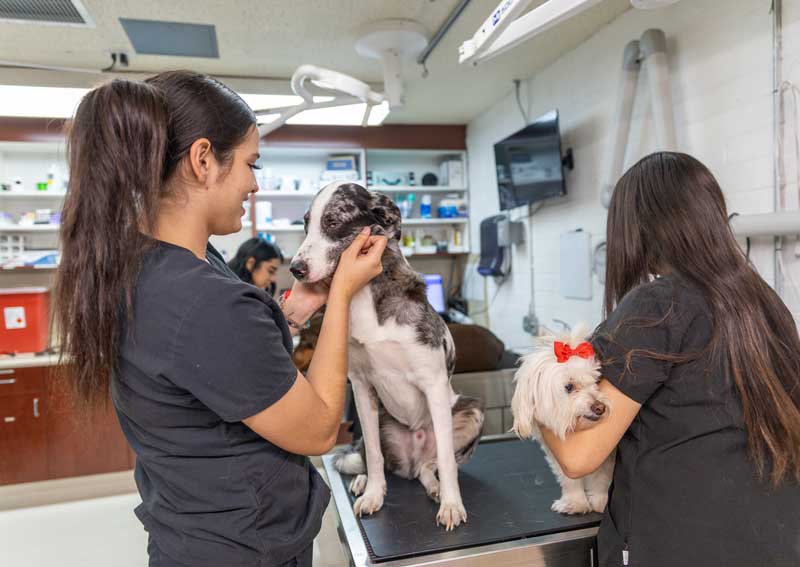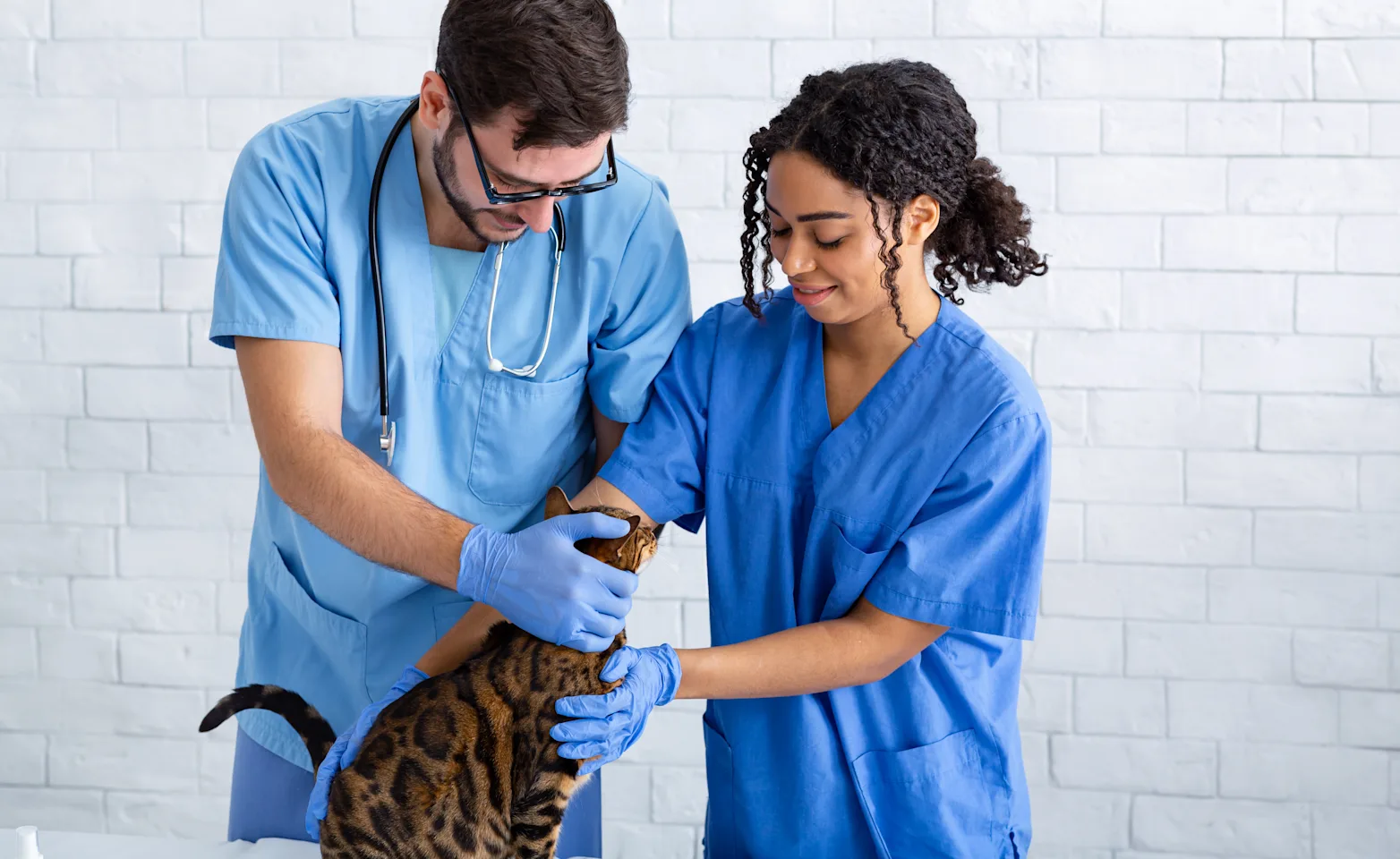Everything About Vet Surgery: Comprehending the Value of Specialist Look After Your Pet dogs
Vet surgical procedure is an essential component of pet healthcare. It includes different procedures, from routine elective surgical procedures to immediate treatments. Recognizing the ins and outs of these surgical procedures can assist pet owners make notified decisions. The preparation, execution, and healing stages are necessary for making certain the health of pets. With correct understanding, owners can navigate the complexities of vet treatment. What aspects should be thought about prior to a pet dog undergoes surgical procedure?
Kinds Of Vet Surgeries
When a family pet needs surgical intervention, comprehending the different kinds of veterinarian surgeries can aid animal proprietors make educated decisions. Veterinary surgical procedures can be extensively classified into 3 main types: elective, immediate, and emergency situation surgical procedures. Optional surgeries, such as spaying or neutering, are planned procedures that are not right away dangerous. Urgent surgeries, like those for foreign body removal, need to be executed quickly yet are not dangerous in the minute. Emergency surgeries, such as those attending to serious injury or inner blood loss, are essential and need prompt attention.Additionally, surgical treatments can differ in complexity, ranging from minimally intrusive laparoscopic procedures to much more considerable open surgical procedures. Each kind of surgical treatment carries its own risks and recovery processes. Comprehending these groups permits pet dog proprietors to participate in purposeful discussions with veterinarians, resulting in much better outcomes for their beloved animals.
Preparing for Your Animal's Surgery
Planning for a family pet's surgical treatment includes a complete list to ensure all essentials are covered. Efficient interaction with the veterinarian is essential for understanding the treatment and any essential pre-operative steps - tplo surgery. In addition, having clear post-operative treatment directions will certainly help owners give the most effective assistance for their recovering family pets
Pre-Surgery Checklist Basics
Ensuring a smooth surgical experience for a family pet needs careful prep work and attention to information. A pre-surgery checklist is vital for pet dog owners to follow. First, verifying the scheduled surgery date and time is crucial. Owners ought to likewise validate that their animal has not eaten according to the veterinarian's guidelines, usually for 8-12 hours before surgical treatment. Gathering required clinical documents, consisting of inoculation history, is essential for the veterinarian's evaluation. It is additionally a good idea to prepare a comfortable room at home for the pet's recuperation after surgical treatment. Ultimately, proprietors need to have a prepare for transportation to and from the vet center, ensuring that the animal is secure and comfy throughout the journey. Complying with these steps can significantly improve the surgical experience.
Communicating With Your Veterinarian

Effective communication with the vet is important for a successful medical experience for animals. Proprietors need to be prepared to discuss their animal's medical history, including any pre-existing conditions, medications, and allergic reactions. This information helps the veterinarian examine threats and customize the surgical plan accordingly. Furthermore, pet owners need to ask questions concerning the treatment, anesthetic, and expected results to assure they fully understand the process. Clarifying any kind of doubts can relieve anxiety for both the family pet and the owner. It is likewise crucial to communicate any behavior modifications or problems observed in the family pet leading up to the surgery. Ultimately, clear dialogue fosters trust and partnership, making certain that pets get the best feasible care during their medical trip.
Post-Operative Care Recommendations
After going over the operation with the veterinarian, pet dog proprietors should concentrate on post-operative care directions to facilitate a smooth healing for their pets. These instructions normally consist of keeping an eye on the medical website for indicators of infection, such as inflammation or discharge. Family pets may need to be kept one's cool and restricted to stop too much motion that can disrupt recovery. Pain administration is crucial, so proprietors need to adhere to the vet's support on carrying out medications. Furthermore, nutritional constraints might be advised to stay clear of stomach trouble. Routine follow-up visits are necessary to assure appropriate healing and deal with any kind of concerns. By adhering to these post-operative treatment directions, pet proprietors can substantially add to their animal's recovery and total wellness.
The Surgery Explained
The surgery for animals incorporates essential actions that guarantee their safety and security and recuperation. Pre-surgery preparations are necessary for minimizing threats, while post-operative treatment standards play a crucial role in advertising healing. Comprehending these parts assists animal proprietors navigate the surgical experience extra properly.
Pre-Surgery Preparations
Prior to an animal undertakes surgical treatment, several essential preparations must occur to assure a risk-free and effective procedure. A complete vet assessment is essential to examine the family pet's general health and wellness and recognize any type of prospective risks. This may include blood tests, imaging, or other diagnostics. The veterinarian will also talk about anesthesia alternatives customized to the family pet's certain demands. In addition, animal proprietors are typically advised to withhold food and water for a specified time before surgical procedure to decrease the risk of difficulties during anesthetic. It is necessary for owners to provide a full clinical history, including any kind of medications or allergies, making sure the surgical team has all necessary information. Correct communication and adherence to pre-surgery guidelines can substantially improve the end result of the procedure.
Post-Operative Care Guidelines
Correct post-operative treatment is necessary for ensuring a pet dog's recovery following surgical treatment. After the treatment, pet dogs should be checked carefully for any kind of indicators of issues, such as too much bleeding, swelling, or unusual habits. It is essential to comply with the vet's guidelines regarding drugs, including discomfort reducers and antibiotics. Pet dogs should be maintained in a peaceful, comfy environment to reduce anxiety and dog vets around me promote healing. Restricting activity is crucial; short, leashed strolls might be required, however leaping or running need to be prevented. Normal follow-up consultations ought to be scheduled to examine the healing process. Additionally, the surgical website must be kept tidy and dry, with any type of signs of infection reported to a veterinarian without delay. Following these guidelines boosts recovery end results.
Anesthesia and Discomfort Monitoring
Effective anesthesia and pain management are crucial elements of veterinary surgical procedure, guaranteeing that pets continue to be comfy and secure throughout the procedure. Veterinarians evaluate each animal's individual demands, thinking about aspects such as age, weight, health and wellness standing, and the type of surgical treatment being performed.Anesthesia protocols commonly consist of a combination of pre-anesthetic medications, induction agents, and inhalant anesthetics, allowing for accurate control over the animal's level of awareness. Surveillance throughout surgery is vital; vets continually observe vital signs to attend to any kind of potential problems promptly.Pain monitoring techniques may involve opioids, non-steroidal anti-inflammatory drugs (NSAIDs), and local anesthetics, tailored to the pet dog's certain scenario. This complex strategy aids lessen discomfort and promotes a smoother surgical experience. By prioritizing efficient anesthetic and discomfort management, vet specialists improve the total welfare of family pets undergoing surgeries, guaranteeing they get the greatest standard of care.
Post-Operative Treatment and Healing
Complying with surgery, the focus moves to post-operative care and recuperation, which is crucial for ensuring an animal's secure go back to typical tasks. Throughout this period, pet dogs require a silent, comfortable environment to aid healing. Owners need to carefully monitor their animals for any kind of signs of discomfort or unusual behavior.Veterinary standards commonly include specific instructions related to medicine management, wound treatment, and nutritional adjustments. It is essential to stick to these recommendations to lessen difficulties and advertise healing. Pet dogs may need to be limited from energetic activities, such as running or leaping, during their recovery period (tplo surgery).Regular follow-up consultations with the vet enable monitoring of the family pet's development and timely modifications to the treatment strategy. Supplying psychological assistance and friendship can also improve a pet dog's healing experience, helping to relieve anxiety and anxiousness. Overall, persistent post-operative treatment plays a substantial duty in achieving a successful recuperation
Acknowledging Difficulties After Surgery
Exactly how can pet dog owners recognize issues after surgical treatment? Awareness of details indicators is important for making certain the well-being of animals throughout recuperation. Typical indicators include excessive swelling, inflammation, or discharge at the medical site, which might represent infection. In addition, relentless pain, shown by whining or unwillingness to move, should motivate immediate interest. Changes in appetite or water intake can likewise indicate complications; a decline in these habits may indicate pain or distress.Moreover, family pet owners need to check their animals for any type of unusual habits, such as sleepiness or problem breathing, as these can be signs of significant issues. Throwing up or diarrhea following surgery might call for immediate veterinary analysis. Recognizing these difficulties early can substantially impact a pet dog's healing process, highlighting the relevance of caution and punctual interaction with a veterinarian for any concerning symptoms.
The Function of Vet Specialists in Surgical Treatment
Veterinary professionals play an essential duty in making sure the safety and security and success of surgeries for pets, specifically adhering to surgery when monitoring and treatment are paramount. These specialists consist of veterinarians, vet specialists, and support staff, all of whom contribute specialized skills to the medical process.Before surgical treatment, vets carry out detailed evaluations to assess the family pet's wellness, ensuring that any kind of underlying problems are managed. Throughout the procedure, the medical group supplies anesthetic, keeps sterilized atmospheres, and checks key signs, very important for minimizing risks.Post-operative treatment is similarly substantial; veterinary specialists observe for difficulties, take care of discomfort, and guide owners on healing practices. Their knowledge allows them to acknowledge early indicators of distress or infection, guaranteeing prompt intervention. Inevitably, the collaborative efforts of vet specialists in surgical treatment cultivate a secure atmosphere, promoting the well-being of family pets throughout the medical trip.

Often Asked Questions
How Do I Pick the Right Veterinary Cosmetic Surgeon for My Pet?
Selecting the best veterinary cosmetic surgeon involves looking into qualifications, reading reviews, and examining the facility's environment. It is vital to reflect on the doctor's experience with particular procedures and their interaction design when deciding.
What Are Typical Misconceptions About Veterinarian Surgeries?
Usual false impressions about vet surgical treatments consist of ideas that they are constantly risky, unneeded, or just for emergencies. Many pet owners undervalue the benefits of precautionary procedures and the ability associated with veterinary surgical care.
Just How Much Will My Animal's Surgical procedure Expense?
The cost of a pet dog's surgical procedure can vary substantially based on aspects such as the type of procedure, the veterinarian's experience, and geographical place (canine tplo surgery). Usually, costs range from a few hundred to several thousand dollars

Can My Family Pet Eat Before Surgery?
Prior to surgical procedure, it is usually suggested that pets abstain from eating for a certain period. This fasting helps in reducing the threat of issues during anesthetic. Proprietors should consult their veterinarian for accurate instructions tailored to their pet dog's demands.
What if My Pet Dog Has Pre-Existing Wellness Issues?
When a pet has pre-existing wellness problems, it's essential for the vet to examine these factors prior to surgical treatment. This evaluation guarantees appropriate safety measures are taken, lessening dangers and optimizing the family pet's overall security throughout the treatment.